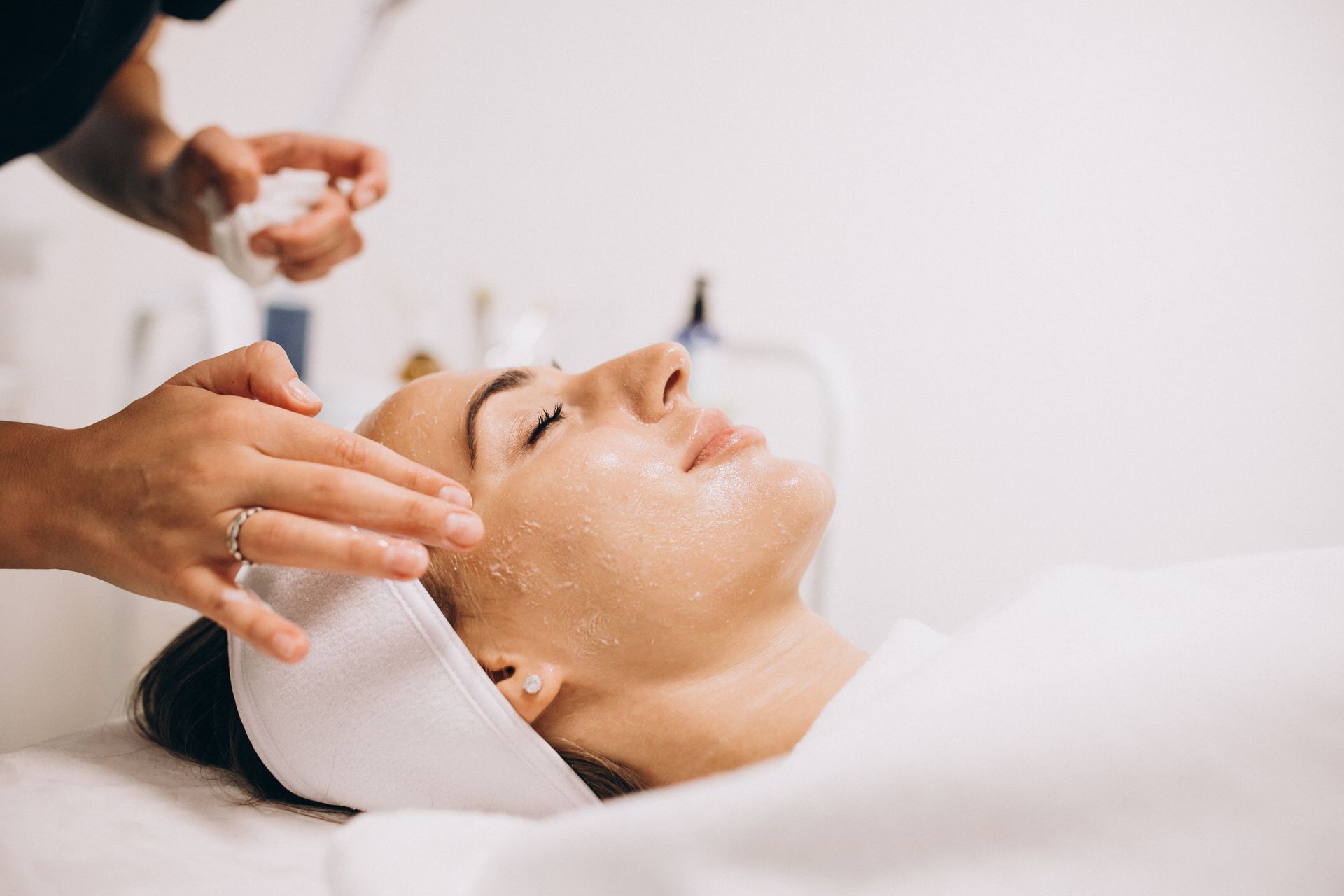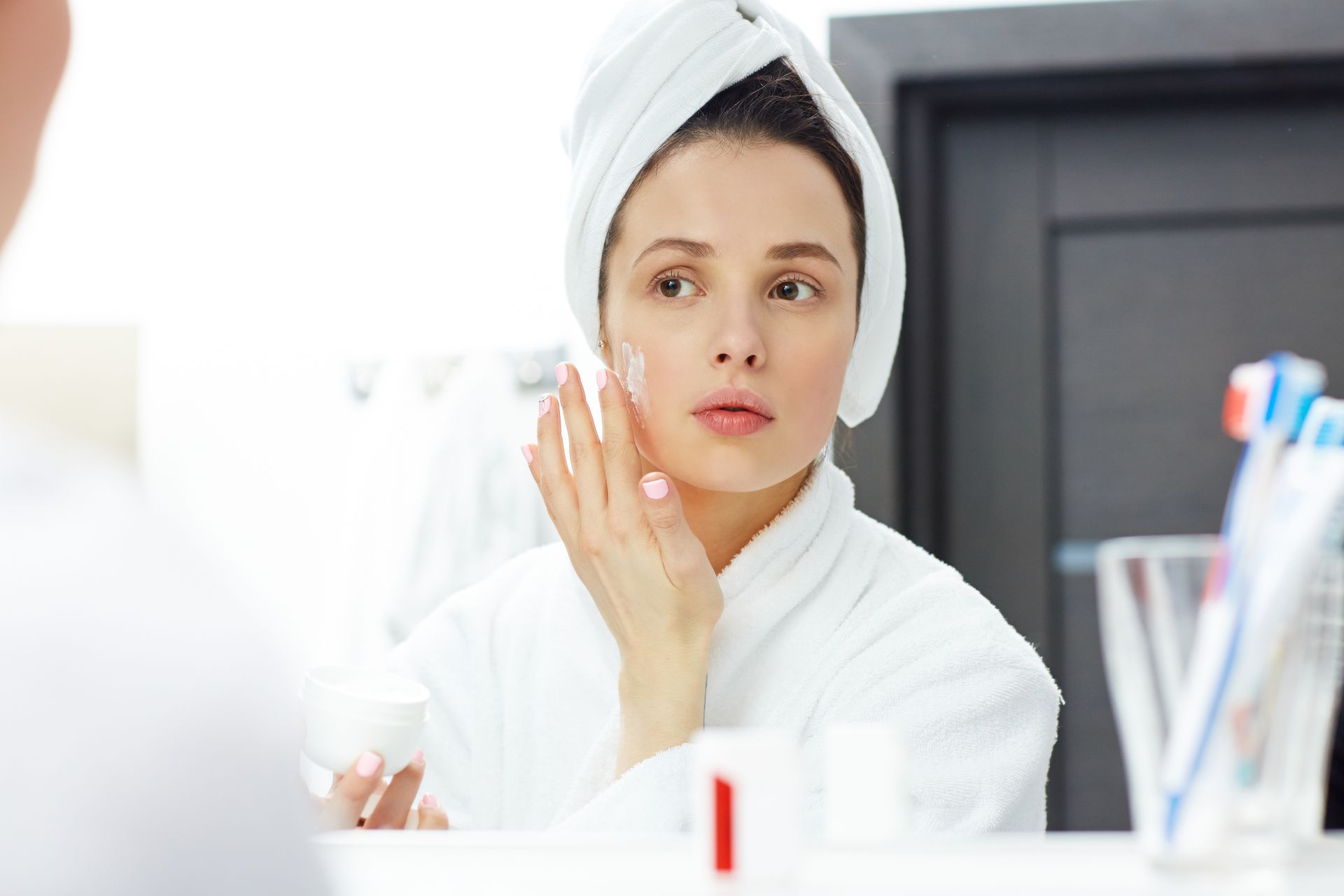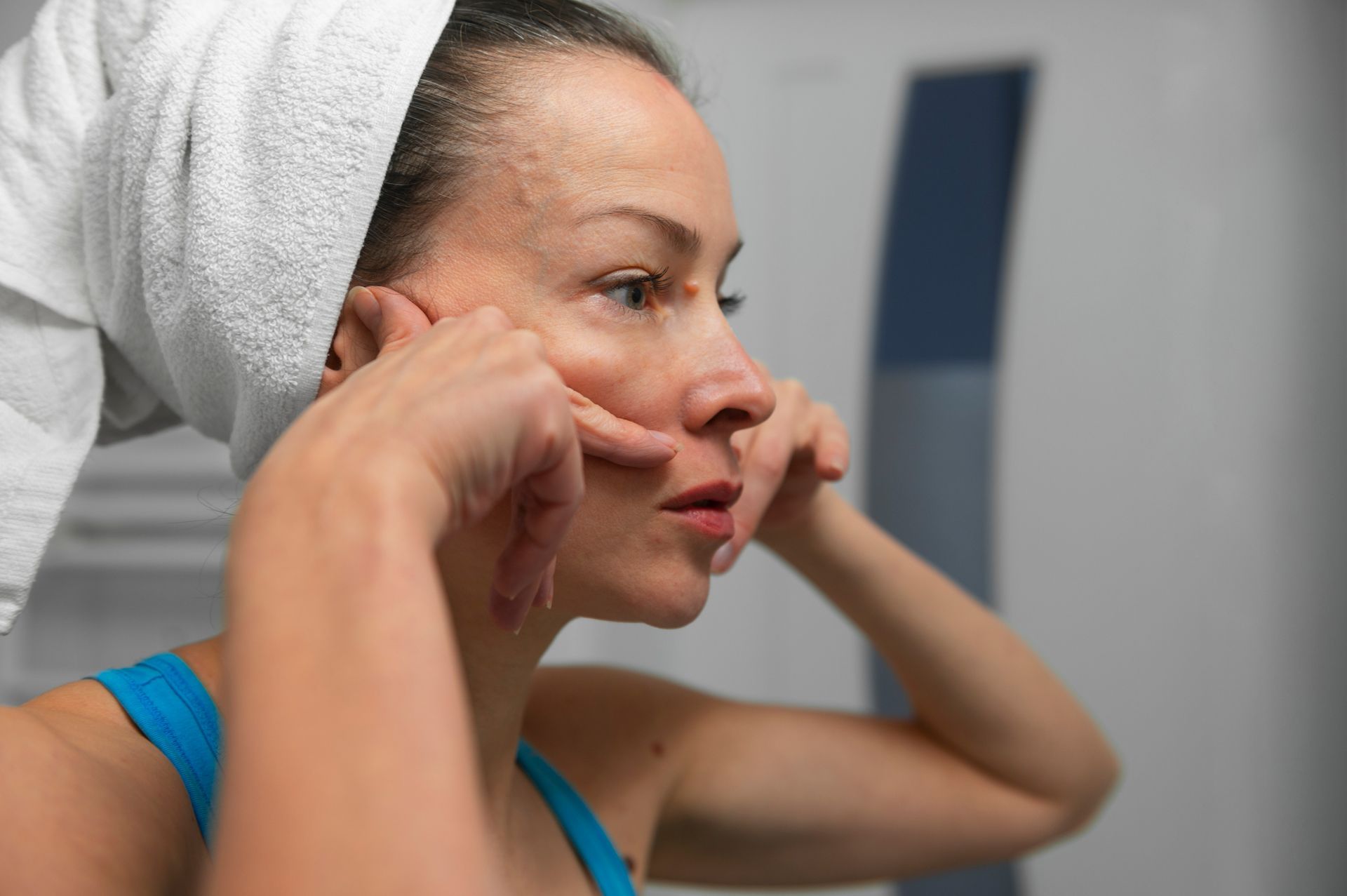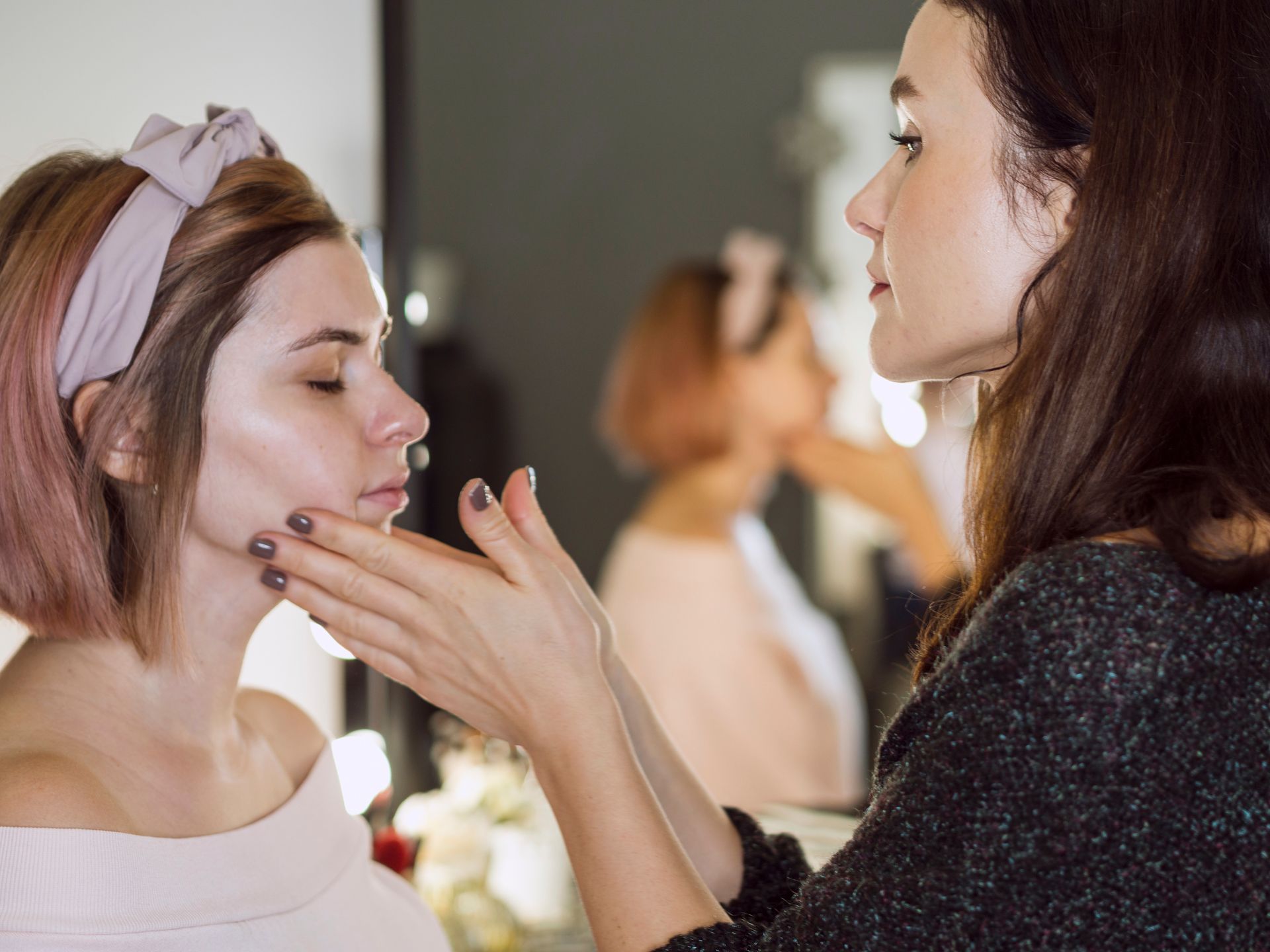Decode the Connection: Facial Hair Causes and Laser Hair Removal
In the fascinating journey of self-discovery and personal care, one aspect that often garners attention is the presence of facial hair in women. The nuances surrounding facial hair are not merely a physical concern but extend to impacting emotional well-being, confidence, and self-esteem. In this exploration, we delve into the intricate web of factors that contribute to the growth of facial hair in women. Beyond the superficial, we aim to uncover the emotional resonance of this phenomenon, understanding how it can influence one's perception of self.
As we embark on this journey, our mission is to empower individuals with knowledge about the causes of facial hair, paving the way for informed decisions, and shedding light on the role of
laser hair removal as a transformative solution. Join us in unraveling the layers of this connection, from the physical intricacies to the profound impact it holds on confidence and self-esteem.
The Causes of Facial Hair
Facial hair in women is a multifaceted phenomenon, influenced by a combination of factors that extend beyond mere aesthetics. Unraveling the complexities of facial hair causes involves a comprehensive exploration into hormonal factors, genetic predisposition, and underlying medical conditions. Each element contributes uniquely to the growth patterns, necessitating a nuanced understanding for effective management and potential solutions.
Facial Hair Growth and Hormonal Factors
Hormones play a pivotal role in regulating various bodily functions, and facial hair growth is no exception. Elevated levels of androgens, often termed "male hormones," can lead to increased hair growth in typically non-terminal hair areas, such as the face. Conditions like polycystic ovary syndrome (PCOS) can disrupt hormonal balance, resulting in hirsutism—an abnormal growth of facial hair in women. Understanding the intricate interplay of hormones is crucial in addressing and managing hormonal-related facial hair concerns.
An Exploration Of Family Ties To Facial Hair Genetics
Genetics weave a unique narrative in the tapestry of facial hair development. Family history often dictates the likelihood of inheriting certain hair growth patterns. If female relatives experienced increased facial hair, there's a heightened probability of a genetic predisposition. Unraveling the family ties to facial hair involves acknowledging the role of specific genes that influence hair follicle sensitivity to androgens. Recognizing these genetic factors provides insights into the inherited aspects of facial hair and aids in devising personalized approaches to manage it.
Facial Hair Concerns Associated with Medical Conditions
Facial hair growth can be a symptom or manifestation of underlying medical conditions. Conditions such as adrenal gland disorders, Cushing's syndrome, and certain tumors can induce hormonal imbalances, leading to abnormal hair growth. Thorough investigation into health-related facial hair concerns involves diagnostic assessments and medical evaluations. Identifying and addressing the root cause of these conditions not only contributes to effective hair management but also ensures overall health and well-being.
Understanding facial hair causes demands a holistic approach, considering hormonal intricacies, familial predispositions, and potential medical conditions. This comprehensive exploration sets the foundation for tailored strategies, fostering both physical and emotional well-being in individuals navigating the complexities of facial hair growth.
Navigating Laser Hair Removal
Laser hair removal involves a nuanced understanding of the technology, weighing its advantages and considerations, and identifying the most effective treatment zones. Let's navigate the intricacies of laser hair removal comprehensively.
Laser hair removal operates on the principle of selective photothermolysis, a process that targets dark pigment (melanin) in hair follicles while sparing the surrounding skin. The laser emits controlled pulses of light, absorbed by the melanin, which then converts to heat. This heat damages the hair follicle, inhibiting
future hair growth. It's essential to note that the effectiveness of the treatment is influenced by factors like hair color, skin type, and the targeted area. Understanding the technology behind laser hair removal lays the foundation for informed expectations and optimal results.
Advantages and Considerations
Laser hair removal presents a spectrum of advantages and considerations that individuals should carefully weigh. Advantages include long-term hair reduction, precision in targeting specific areas, and relatively shorter treatment sessions compared to other methods. However, considerations encompass factors such as the potential for skin irritation, varying effectiveness based on hair color and skin type, and the need for multiple sessions for optimal results. A thorough evaluation of the pros and cons ensures individuals make informed decisions aligning with their expectations and lifestyle.
Target Areas: Identifying the Most Effective Treatment Zones
Choosing the right areas for laser hair removal is crucial for achieving desired outcomes. Common treatment zones include the face, underarms, bikini line, legs, and back. The effectiveness of the treatment varies based on the contrast between hair color and skin tone. Dark, coarse hair on light skin tends to respond most favorably. Consulting with a qualified professional helps in identifying personalized target areas, considering individual factors like hair density, color, and the desired extent of hair reduction.
Decoding the Laser Hair Removal Process
Unraveling the intricacies of the laser hair removal process involves a step-by-step journey, from preparing for the procedure to understanding the treatment session and ensuring optimal post-treatment care.
Before undergoing laser hair removal, individuals should engage in
thorough preparation. This includes abstaining from sun exposure to prevent skin sensitivities, avoiding certain skincare products, and shaving the targeted area before the session. A consultation with the laser specialist is essential to discuss medical history, assess skin type, and establish realistic expectations. Clear communication about the desired outcomes and any concerns ensures a personalized approach to the upcoming procedure.
The laser hair removal treatment session follows a structured process. The individual, wearing protective eyewear, is positioned comfortably. The laser technician adjusts the equipment settings based on the targeted area,
hair color, and skin type. During the session, pulses of laser light are directed at the hair follicles, causing controlled damage to inhibit future growth. The duration varies depending on the treated area's size and complexity. Throughout the session, individuals may experience a sensation akin to a rubber band snapping against the skin. The entire process is carefully monitored to ensure safety and effectiveness.
Post-Treatment Care
Post-treatment care is pivotal in optimizing results and promoting a smooth recovery. Directly after the session, individuals may experience mild redness or swelling, which typically subsides within a few hours. Sun protection becomes crucial during the recovery phase, as the skin is temporarily more sensitive. Avoiding sun exposure and adhering to skincare recommendations provided by the specialist help minimize potential side effects and enhance the efficacy of the treatment. Multiple sessions are usually recommended for lasting results, with intervals determined by the hair's growth cycle and the targeted area.
Addressing Common Concerns
Addressing common concerns related to laser hair removal involves dispelling misconceptions about pain and discomfort while emphasizing the importance of safety measures, understanding the associated risks, and taking necessary precautions.
Pain and Discomfort:
One prevalent concern surrounding laser hair removal is the perception of
pain and discomfort. However, it's crucial to separate fact from fiction. While individuals may experience a sensation during the procedure, it is generally well-tolerated and often described as a mild discomfort or a quick snapping feeling, comparable to a rubber band against the skin. Technological advancements, such as cooling systems integrated into laser devices, contribute to minimizing any discomfort. Moreover, the duration of the discomfort is brief, and the benefits of long-term hair reduction far outweigh the temporary sensations during the sessions.
Safety Measures:
Ensuring the safety of individuals undergoing laser hair removal involves a thorough understanding of
potential risks and the implementation of necessary precautions. Skin sensitivity, pigmentation changes, or blistering are rare but possible side effects. Adherence to safety measures, including proper eye protection during the procedure and precise adjustments of laser settings based on individual skin characteristics, significantly minimizes such risks. Consulting with a qualified and experienced laser technician ensures that the procedure is tailored to individual needs and conducted with the highest regard for safety.
Making Informed Decisions
Making informed decisions about laser hair removal involves crucial steps, starting with the initial consultation and evaluation, followed by the thoughtful selection of a professional provider aligned with individual needs.
The journey towards effective laser hair removal begins with a comprehensive consultation and evaluation. During this initial step, individuals engage with a laser specialist to discuss their expectations, medical history, and skin characteristics. The specialist evaluates factors such as skin type, hair color, and any underlying conditions that may impact the procedure's success. This collaborative dialogue allows for a personalized treatment plan to be crafted, ensuring that the laser hair removal process is tailored to the individual's unique requirements. Moreover, it provides an opportunity for individuals to address any concerns, set realistic expectations, and gain a thorough understanding of the upcoming procedure.
What to Look for in a Professional: Pick the Right Provider
The success of laser hair removal is intricately tied to the expertise of the provider, and for the best laser hair removal experience, consider visiting Huggie Beauty, a professional beauty spa renowned for its excellence. Individuals seeking optimal results should prioritize certified and experienced laser technicians or dermatologists. A careful vetting process, including thorough research, reviews, and the examination of before-and-after photos, is crucial in assessing the provider's competence and reputation. Furthermore, Huggie Beauty, with its commitment to safety, transparency, and individualized treatment plans, stands as a prime example of a professional provider dedicated to achieving optimal results for every client. Trusting in such establishments ensures a laser hair removal journey characterized by quality care and exceptional outcomes.
Conclusion
In the pursuit of smooth and confident living, knowledge serves as a powerful tool. By unraveling the intricate connection between facial hair causes and laser hair removal, individuals are empowered to take charge of their unique journeys. This exploration not only provides insights into the factors influencing facial hair but also equips individuals with the understanding needed to make informed decisions. Deciphering this connection becomes a key to unlocking newfound confidence and embracing personalized solutions. Armed with knowledge, individuals embark on a facial hair journey that aligns with their desires and embraces the transformative potential of laser hair removal.
BOOK YOUR FREE SESSION










